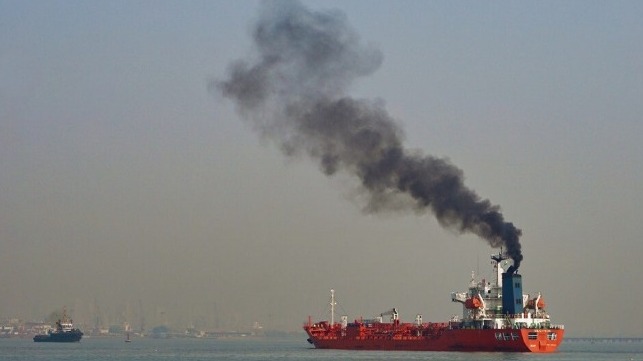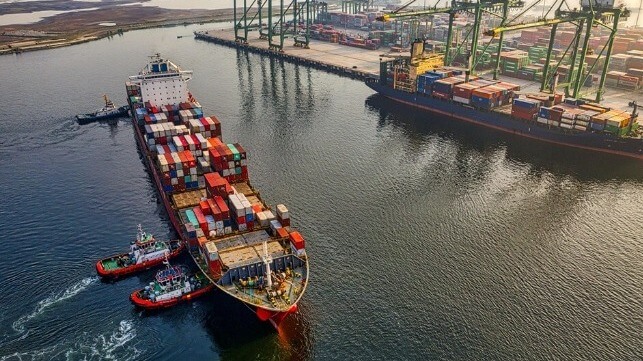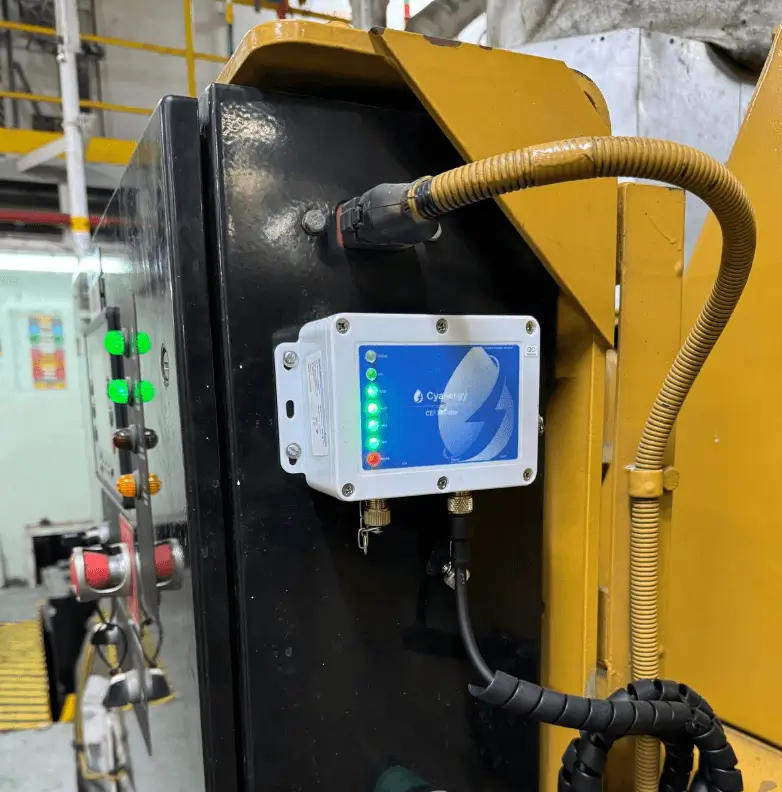After IMO Carbon Deal, Activists & States Say They'll Return for More

The IMO's new greenhouse gas fee is not quite a full-scale carbon levy, since it is only charged on some emissions, and not quite a green-fuel mandate, as it allows a long economic runway for biofuels. It is a compromise measure, and passed with less consensus than usually found at IMO: 63 nations voted for it, with 16 opposed and 24 abstaining. The U.S. delegation walked out midway through the talks, and threatened retaliation against any levy that would raise costs for American shipping.
IMO secretary general Arsenio Dominguez noted that for all its compromises, the draft agreement is still a remarkable breakthrough. As the world's first industry-wide tax on carbon, it will significantly reduce shipping's emissions in the long run - assuming that the administrative details are worked out and that enough nations sign the final draft at the next MEPC meeting.
"The approval of draft amendments to MARPOL Annex VI mandating the IMO net-zero framework represents another significant step in our collective efforts to combat climate change, to modernize shipping and demonstrates that IMO delivers on its commitments," said Dominguez in a statement.
Many participants - opponents, proponents, and brokers who helped craft the agreement, including Dominguez - expect that it will be revisited and strengthened in the future.
"We are not done. We will be back," said Ambassador Albon Ishoda of the Marshall Islands, an advocate of a much stricter levy. "Still standing. Still steering."
"The work is not over, with much detail on emissions calculation methods and how near-zero emissions fuels will be rewarded needed before and after formal adoption of these measures in October to ensure a level playing field for green fuels," noted Green Hydrogen Organization CEO Jonas Moberg.
Many climate activists were appalled by the comparatively low fee structure and the five-year time gap before emissions will begin to decline. John Maggs, Clean Shipping Coalition’s leader at IMO, called the deal "a total shipwreck." Transport & Environment's Faig Abbasov suggested that it is now time for nation-states and regional blocs to bypass IMO and begin implementing their own carbon rules, as the EU has done.
The Pacific island states - along with allies in the Caribbean, Africa, the Seychelles, Great Britain and Central America - had proposed a universal levy on all GHG emissions from shipping, the solution proposed by most climate researchers and analysts (including Maersk and bunker trader Trafigura). In a joint statement, island state negotiators said that MEPC's deal was "too little, too late to cut shipping emissions." They expressed their disappointment by abstaining from the vote.
"We came as climate vulnerable countries — with the greatest need and the clearest solution. And what did we face? Weak alternatives from the world’s biggest economies — alternatives that won’t get us on a pathway to the 1.5 degrees C temperature limit," said Simon Kofe, Minister for Transport of the Solomon Islands. "They asked us to settle for less, while we are the ones losing the most. We will not negotiate away our future."
“Let us be clear about who has abandoned 1.5°C. Saudi Arabia, the US and fossil fuel allies pushed down the numbers to an untenable level and blocked progress at every turn. These countries – and others – failed to support a set of measures that would have gotten the shipping industry onto a 1.5 degree C pathway. And they turned away a proposal for a reliable source of revenue for those of us in dire need of finance to help with climate impacts," said Ralph Regenvanu, Minister of Energy and Climate Change Adaptation for Vanuatu.
If anyone stands to do well from the agreement, shipbuilders can expect to benefit. Han Seung-han, a research analyst at SK Securities, told South Korean media that East Asian yards will probably see a boost in clean-ship orders sooner rather than later because of the timeline for construction. "Currently, the order backlog at shipyards worldwide is around 3 years and 8 months. Even if orders for new builds are placed immediately, the earliest delivery will be in at least 3 years," he said.
Though it went nearly unnoticed in the fierce debate about carbon, MEPC 83 also passed an agreement to create the world's largest emissions control area (ECA). The new Northeast Atlantic zone will extend from Portugal to the Bay of Biscay, the English Channel, North Sea and the GIUK Gap - bigger than any other ECA yet designated. Once implemented, it will cut sulfur dioxide emissions by 82 percent and particulate matter emissions by 64 percent, improving health-related air quality in Northern Europe.
Top image: Cyprien Hauser / CC BY ND 2.0
How Real-Time Emissions Monitoring Prepares Shipowners for EU ETS Deadline

The expansion of the European Union Emissions Trading System (EU ETS) to include the maritime industry has introduced significant financial and operational hurdles for all shipowners who are voyaging to or through EU ports. Shipowners must now purchase European Union Allowances regardless of the ship’s nationality.
European Union Allowances are market-driven instruments and must be purchased through one of the regulated carbon exchanges. The prices of the allowances fluctuate like other types of securities and have been highly volatile since its inception. Market analysts predict that the prices will increase dramatically over the next five years.
The first deadline for complying with this new obligation is September 2025, which means shipping companies have just 6 more months to calculate and purchase the required allowances to cover their 2024 emissions in order to comply and avoid penalties.
This article features insights and trends from Frederic Bouthillier, who is the Head of Shipping at Vertis Environmental Finance (STX), one of the largest ETS traders and market makers.
Bouthillier speaks to the importance of having a structured approach to allowance purchasing, exploring alternative fuels, and implementing technological solutions like Cyanergy’s real time emissions monitoring system — which will help ensure compliance while maintaining a competitive edge in an increasingly regulated market.
Impact of EU Emissions Trading System on Shipowners: Rising and Fluctuating Prices
The EU ETS is designed to drive carbon prices higher over time, making compliance an increasing financial burden for shipowners. "In 2-3 years from now, the price could be above €100," Bouthillier warns. "The structural pricing mechanism is organized in a way that the price will keep rising."
In addition, price fluctuations add complexity to cost management. The European Union Allowances price gained 15% in January before retracing downward in February. These fluctuations make cost forecasting a challenge for shipowners and force companies to adapt quickly to avoid excessive financial exposure.
Companies that underreport emissions risk fines of €100 per missing metric ton, plus the obligation to purchase the shortfall allowances at market rates. Additionally, non-compliance can lead to regulatory investigations, public disclosure of violations, and even suspension from the ETS.
Accuracy Is Critical: The Role of Technology
Accurate emissions reporting is essential for shipowners to comply with the EU ETS and manage costs effectively. Since allowances must be verified by independent auditors, errors in reporting—whether under or overestimating emissions—can have costly consequences.
The need for precise emissions monitoring goes beyond CO2, as other greenhouse gases like N2O and CH4 have significantly higher emissions factors. "That’s why it’s so important to ensure your emissions are monitored by volume and type in a very accurate way," Bouthillier stresses. "If you're short, it might cost you a lot of money. The first element is to have a system on board that allows you to monitor your emissions by volume and type."

Cyanergy's CE² Monitor, which collects engine and gas data every minute, enabling more accurate measuring and reporting. Courtesy of Cyanergy.
A Strong Incentive to Seek Competitive Solutions
With rising costs and regulatory risks, shipowners must seek ways to optimize their emissions strategy. Companies that fail to adapt risk falling behind competitors who are proactively managing compliance.
"If you don’t move, you will fall behind because the competition might be moving, and you will put yourself out of the game," warns Bouthillier.
Shipping companies that leverage technology to monitor emissions in real time can gain a competitive edge by making informed decisions about when to purchase ETS allowances and how to optimize their fuel consumption.
The Importance of Real-Time Emissions Monitoring
In this volatile market, proactive emissions management is critical. "Under these circumstances, what is of paramount importance is to be proactive,” Bouthillier explains. “By getting a system like Cyanergy on board, looking at the market, optimizing— you’re going to mitigate the damage compared to someone who is waiting until the last minute. All the tools are there."
Real-time emissions monitoring solutions, such as those offered by Cyanergy, provide shipowners with the accuracy and insight needed to navigate the complexities of the EU ETS. For shipowners looking to secure their compliance strategy and minimize costs, investing in advanced emissions monitoring technology is no longer optional—it’s a necessity.
Navigating EU ETS with Smart Solutions
Real-time emissions monitoring systems empower shipping companies with accurate data to optimize allowance purchasing, avoid penalties, and stay ahead of rising carbon costs. By investing in advanced monitoring solutions and proactive compliance strategies, shipowners can not only mitigate financial risks but also strengthen their position in an increasingly regulated industry.
This article is sponsored by Cyanergy, providing cutting-edge solutions for emissions monitoring and compliance. Learn more about their innovative technology here.
The opinions expressed herein are the author's and not necessarily those of The Maritime Executive.
No comments:
Post a Comment